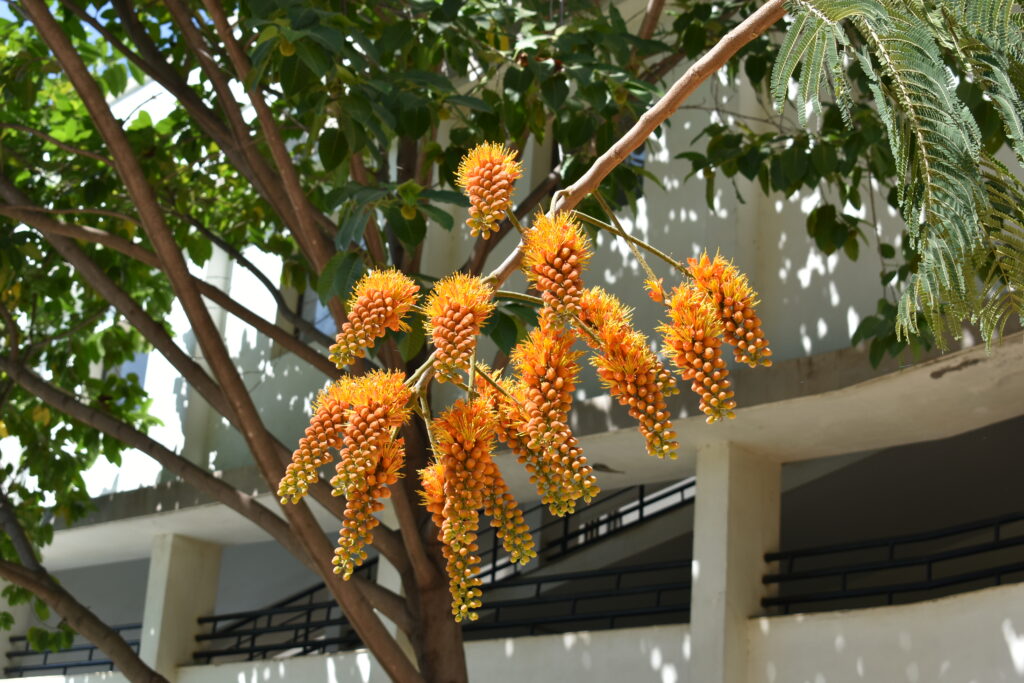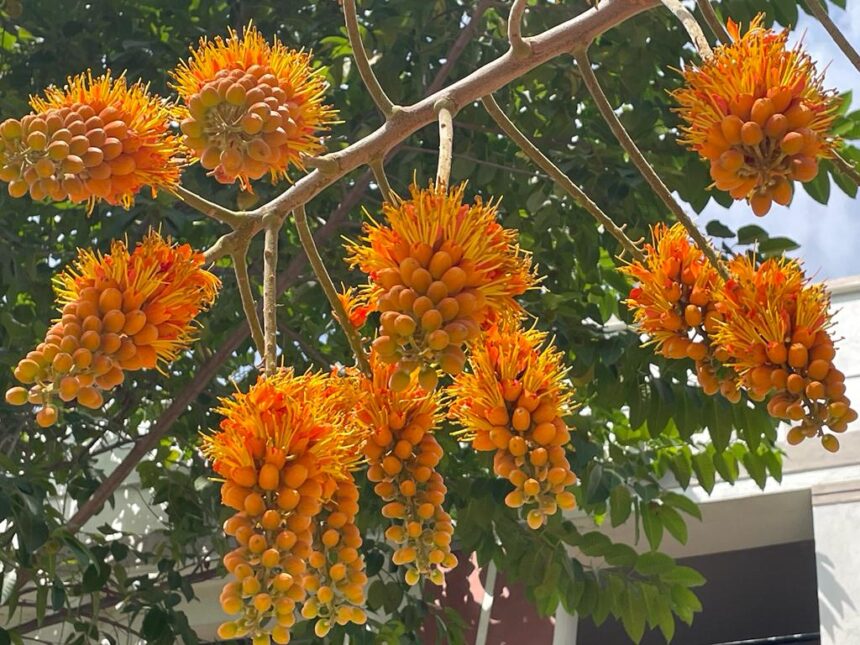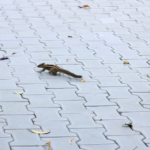The shimmering orange flowers amidst the lush green in the afternoon sun is a beauty that non can miss. These spectacular bright orange brushy flowers of Colvillea racemosa is a beauty in itself and the generous greenery of the deciduous tree with an open, elongate crown and irregularly spreading or pendulous branches elevates its beauty. It overlooks the play pen in our campus which is always crowded with toddlers playing around. The amazing canopy that it forms into provides enough shaded area for the children to rest.
As a tree is generally grows up to 20 metres but occasionally some make it to 30 – 50 metres. The bole of the tree is usually straight and cylindrical, but sometimes it is slightly sinuous and can be up to 100cm in diameter. Colville’s glory is a beautiful, large tree from Madagascar with large double-compound leaves and very showy, cylindrical or cone shaped clusters of bright orange flowers that are bright red in bud.
It’s Uses
The tree is harvested from the wild for its wood and is often used for reforestation projects. Many use it as an ornamental tree because of its bright orange flowers and delicate foliage. The plant is locally common, but its natural habitat is that of deciduous woodlands and seasonally dry forests on sandy soils.
Plant Family
It belongs to the Fabaceae or Pea family, which includes Bois Kwaib (Sabinea carinalis), Glory Cedar (Gliricidia sepium) and Flame of the Forest (Butea monosperma).

Its grape-like clusters of velvety buds, varying from chameleon green to blood orange, are a sight to behold. Leaves are very similar to those of Gulmohar. Its genus is named after Sir Charles Colville, a former British Governor of Mauritius. It is classified as ‘Near Threatened’ in the IUCN Red List of Threatened Species(2011)








